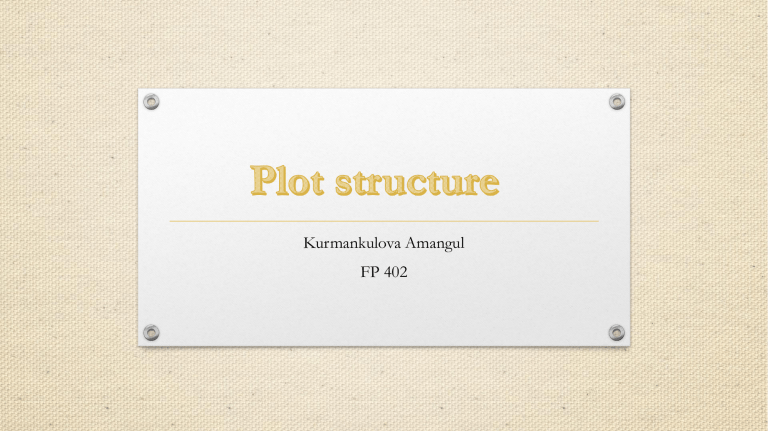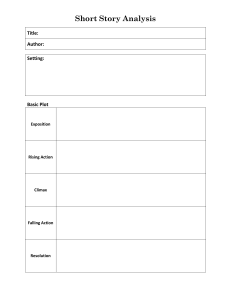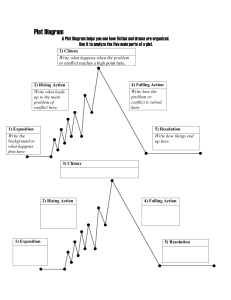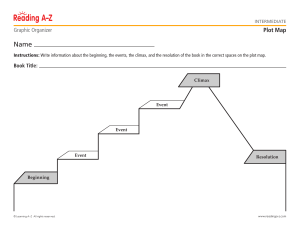
Kurmankulova Amangul FP 402 What Does “Plot” Mean? PLOT is the literary element that describes the structure of a story. It shows the a causal arrangement of events and actions within a story. Every story has a plot, although the way that plot develops differs. Freytag’s Plot Pyramid German novelist Gustav Freytag believed that the plot of most narratives could be divided into five main parts: Exposition Inciting Incident Rising Action Climax Falling Action Resolution/Denoument 1. Exposition: Background information which tells us something about the plot or characters of a story. Exposition usually comes at the beginning of a story. Exposition helps us to understand the context (the circumstances) of a situation. 2. Inciting Incident: This is an event which helps to get things moving. It is an event or situation which forces the protagonist into action. 3. Rising Action: The events leading up to the point of greatest importance in a story.During this part of the story, the protagonist comes to understand what they need to do – what goal they want to achieve, or what obstacle to overcome.At the point, the character faces challenges which help prepare them for the most important challenge, which is still to come. 4. Climax: The peak of the action, when the conflict reaches the crisis point.When the climax occurs, the reader can usually predict what will happen to the characters thereafter.The climax is where all of the action builds to a breaking point, but that doesn’t mean that it is necessarily the most exciting part of the story. 5. Falling Action Definition: The events following the climax. In many cases, the falling action shows the effects of the climax.Falling action isn’t boring. We often learn a great deal about characters and themes in this section of a story. 6. Resolution/Denoument: The outcome. The final part of a narrative in which the strands of the plot are drawn together and matters are explained or resolved. Usually occurs at or near the end of a story.



